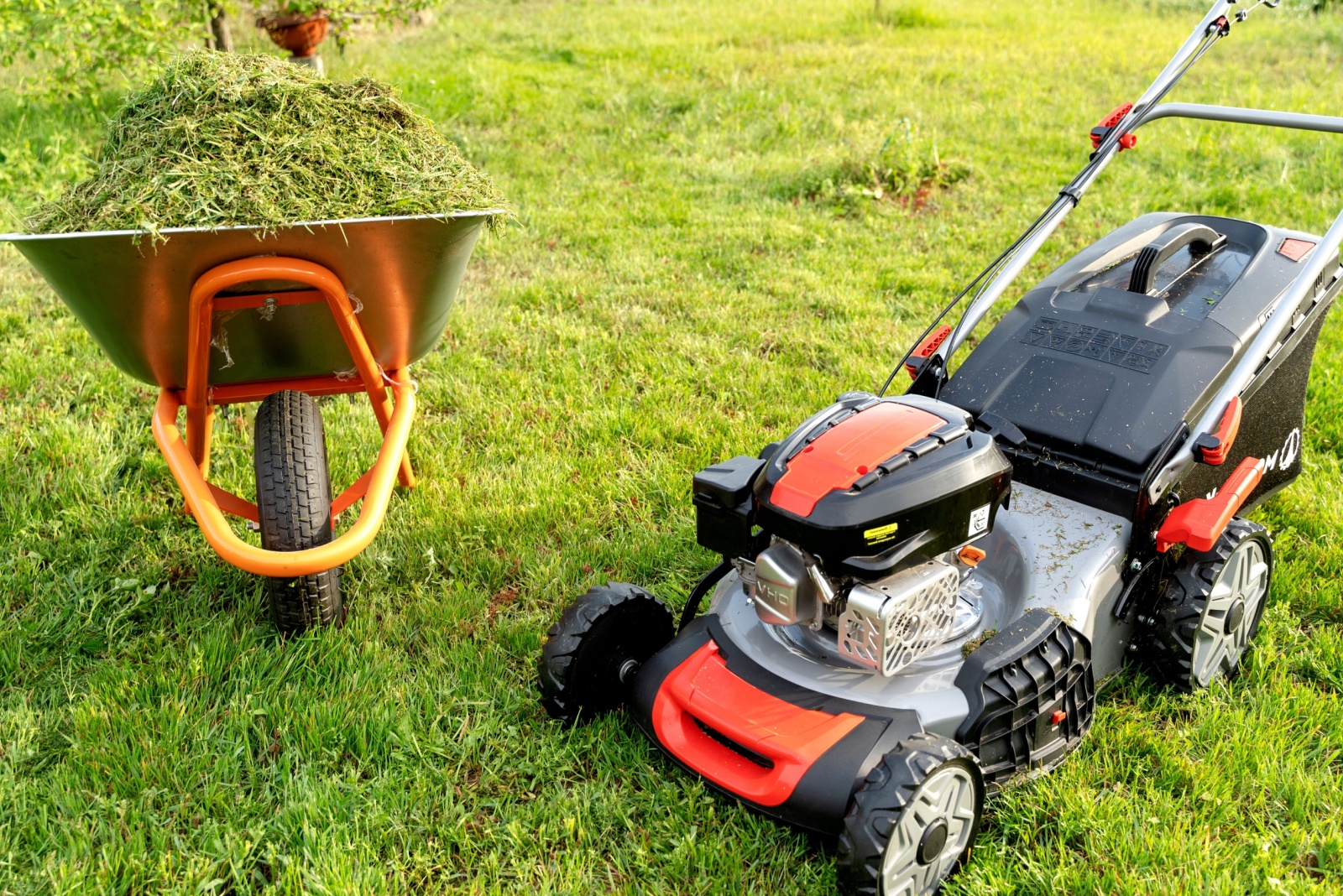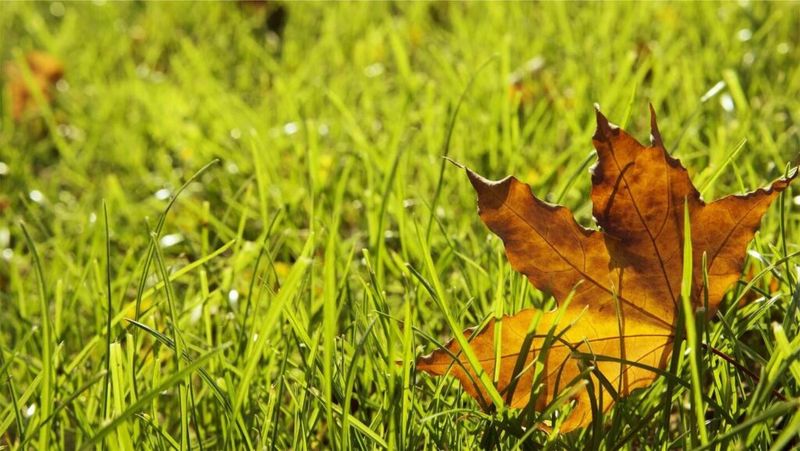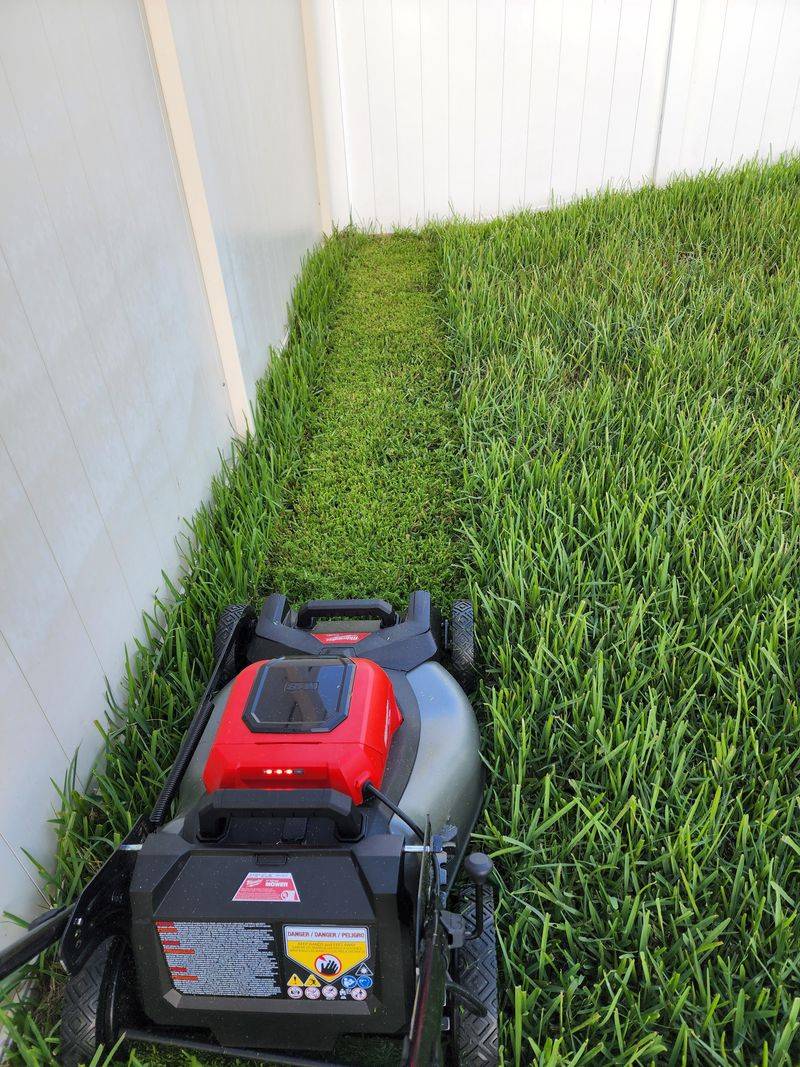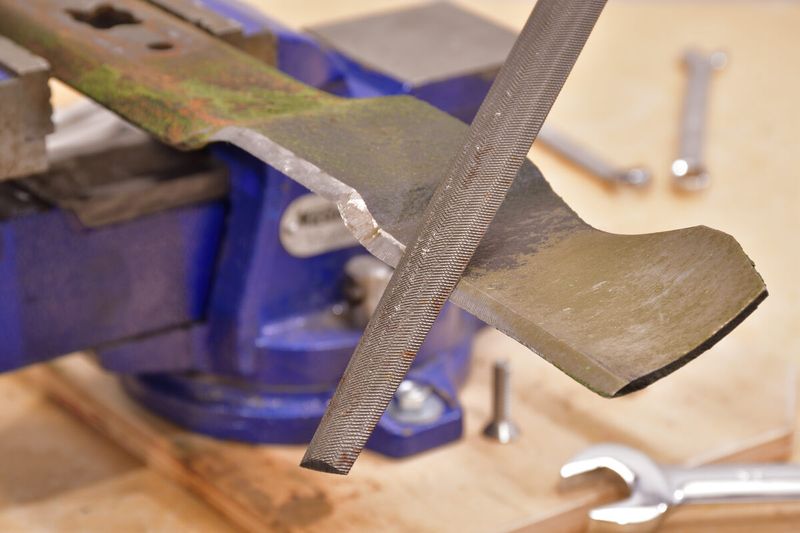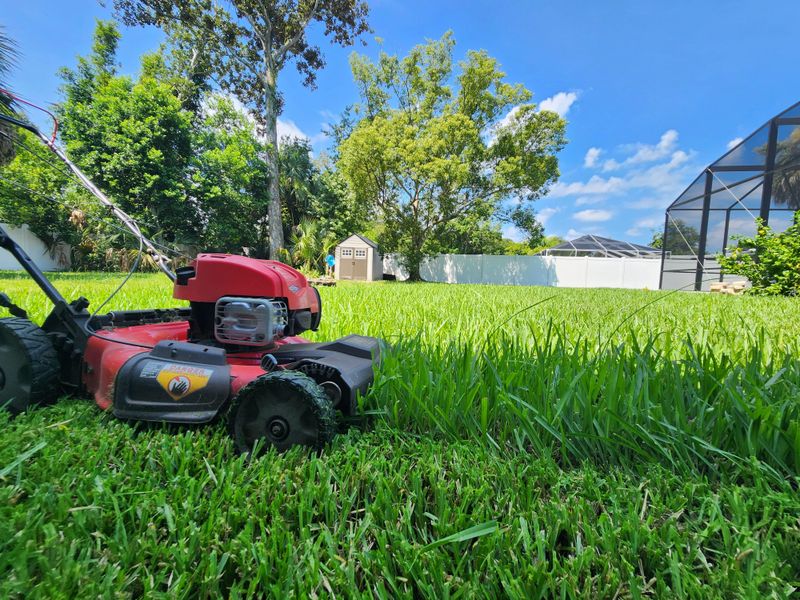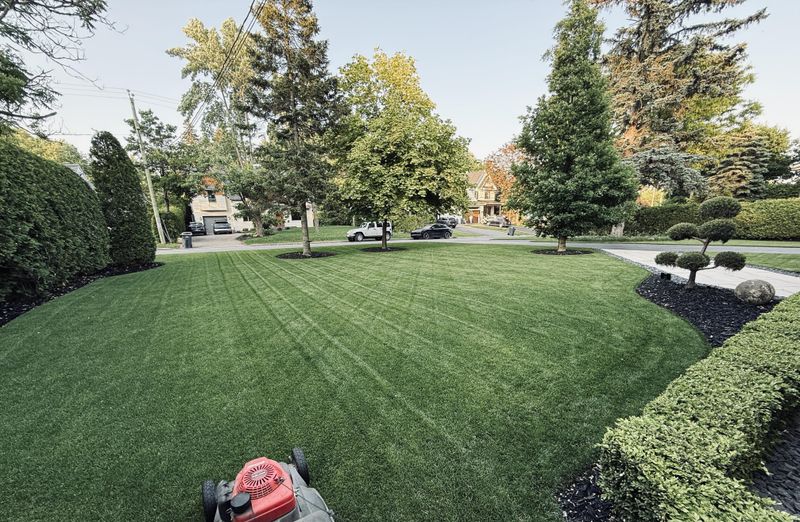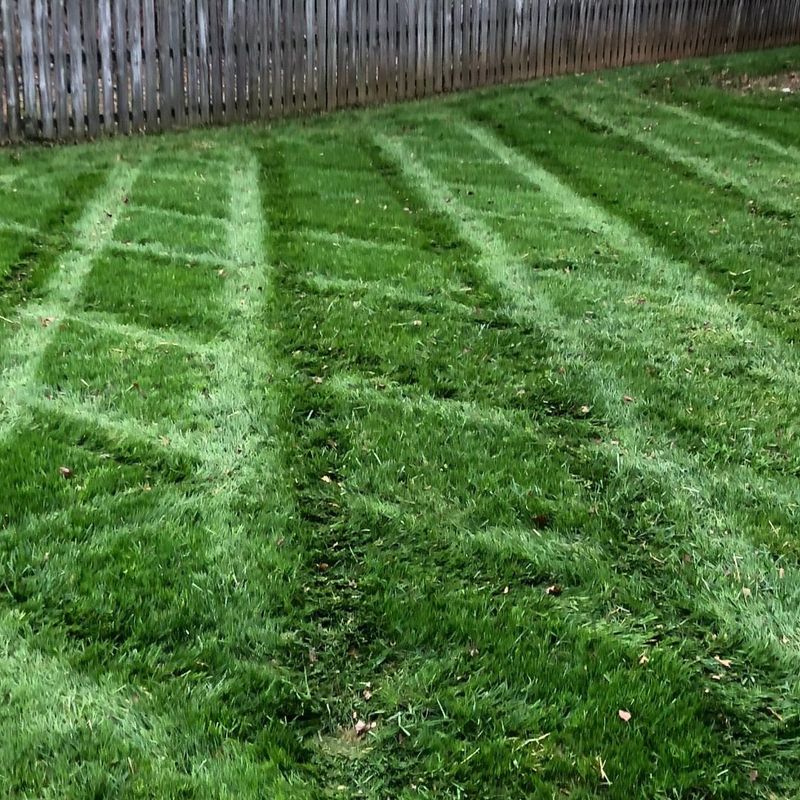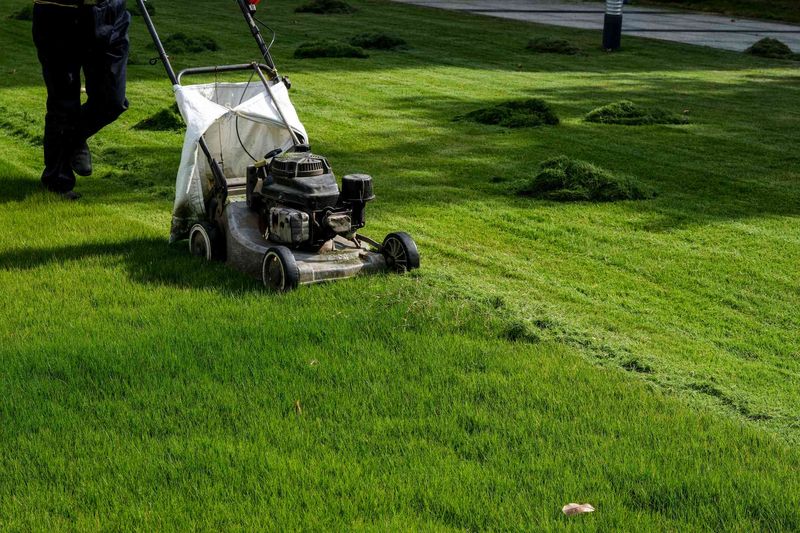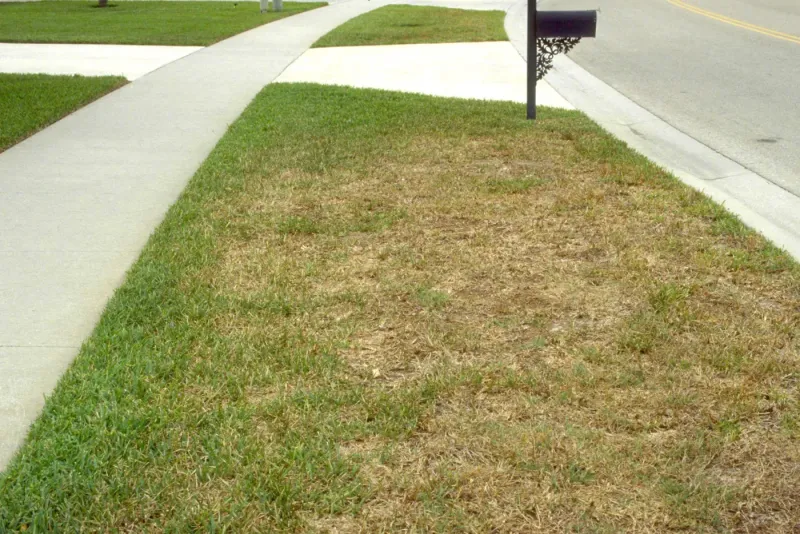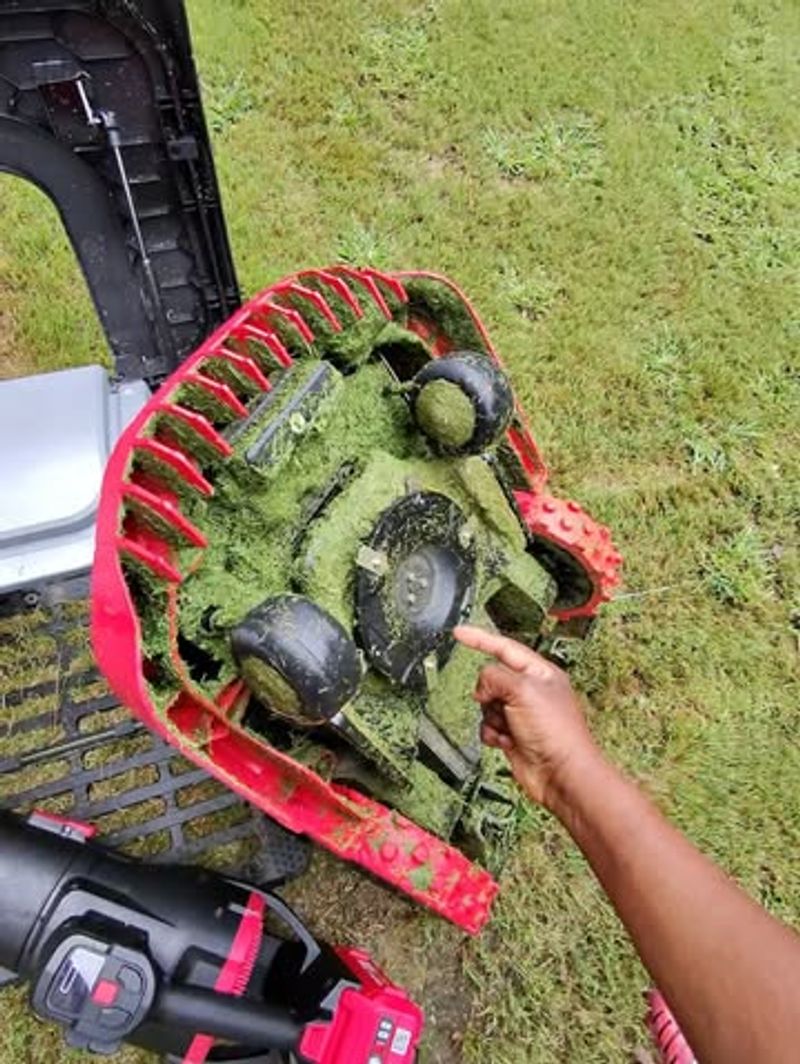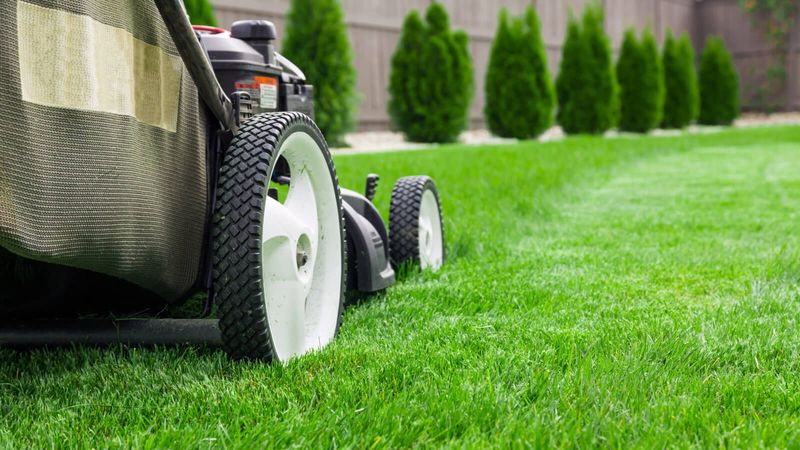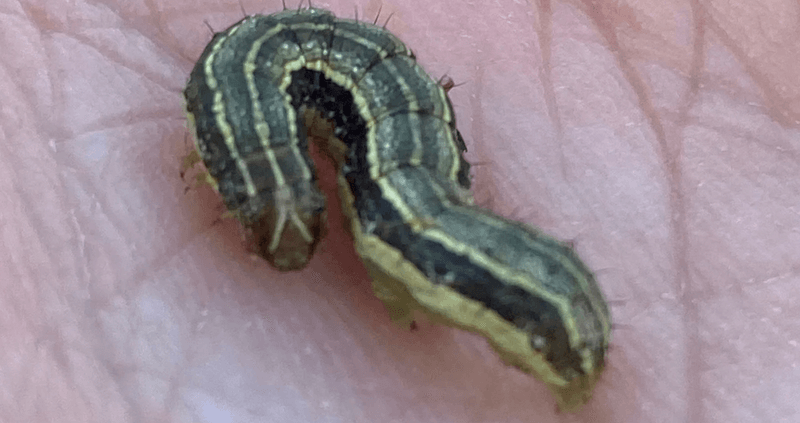October in Florida brings cooler temperatures and the perfect opportunity to give your lawn some much-needed attention. Your grass is recovering from the intense summer heat and preparing for the drier months ahead.
Following the right mowing practices this month can make all the difference between a healthy, vibrant lawn and one that struggles to survive.
1. Adjust Your Mowing Height For Fall Transition
Florida lawns benefit from a slightly higher cut as October arrives. St. Augustine grass should be maintained at 3.5 to 4 inches, while Bahia thrives at 3 to 4 inches.
Taller grass develops deeper roots, which helps your lawn access water and nutrients more effectively. It also provides natural shade to the soil, reducing weed growth.
Cutting too short stresses the grass and makes it vulnerable to pests and disease during the seasonal transition.
2. Mow When Grass Is Completely Dry
Wet grass creates clumps that clog your mower and leave unsightly piles on your lawn. Morning dew is still common in October, so plan your mowing for late morning or afternoon.
Damp grass blades also tear rather than cut cleanly, creating ragged edges that turn brown and invite disease. Your mower works harder when dealing with moisture, putting extra strain on the engine.
Waiting for dry conditions ensures a cleaner cut and healthier lawn overall.
3. Follow The One-Third Rule Religiously
Never remove more than one-third of the grass blade length in a single mowing session. Cutting too much at once shocks the grass and weakens its ability to photosynthesize.
If your lawn has grown tall, resist the urge to scalp it back to your preferred height immediately. Instead, mow multiple times over several days, gradually reducing the height.
This approach keeps your grass healthy and prevents the stress that makes it susceptible to October pests and diseases.
4. Keep Your Mower Blades Sharp And Ready
Dull blades tear grass instead of cutting it cleanly, leaving brown, frayed edges that make your entire lawn look unhealthy. October is an excellent time to sharpen or replace your mower blades.
Sharp blades create clean cuts that heal quickly, reducing the risk of fungal infections common in Florida’s humid climate. Your mower also runs more efficiently with sharp blades, saving fuel and reducing wear.
Check your blades every month during growing season.
5. Change Your Mowing Pattern Each Time
Grass develops a growth pattern based on the direction you mow, eventually leaning one way and creating an uneven appearance. Alternating your mowing direction prevents this problem.
Changing patterns also prevents soil compaction along the same wheel tracks, allowing better water and nutrient penetration. Try mowing north-south one week, then east-west the next, or even diagonal patterns.
Your lawn will stand more upright and look fuller with this simple adjustment to your routine.
6. Reduce Mowing Frequency As Growth Slows
October marks the beginning of slower growth for most Florida grasses as temperatures cool slightly. You might notice your lawn needs cutting less often than during summer months.
Pay attention to grass height rather than sticking to a rigid schedule. Some weeks you might mow twice, other weeks just once.
Over-mowing stresses grass unnecessarily and wastes your time and fuel. Let the grass tell you when it needs attention by monitoring its actual growth rate throughout the month.
7. Leave Grass Clippings On The Lawn
Grass clippings return valuable nitrogen and nutrients to your soil as they decompose, acting as a free, natural fertilizer. This practice, called grasscycling, reduces your need for chemical fertilizers.
October clippings break down quickly in Florida’s still-warm conditions, feeding your lawn without creating thatch buildup. The clippings contain about 85% water and decompose within days.
Skip the bagging attachment and let nature do the work of nourishing your grass for free this month.
8. Avoid Mowing During Peak Heat Hours
Even though October is cooler, Florida afternoons can still be quite warm. Mowing during the hottest part of the day stresses both you and your grass.
Freshly cut grass loses moisture through the cut blades, and intense afternoon sun increases this water loss. Your grass recovers better when cut during cooler morning or evening hours.
Early evening mowing is ideal in October, giving grass overnight to recover before the next day’s sun arrives and you time to work comfortably.
9. Watch For Chinch Bugs And Adjust Accordingly
October is prime time for chinch bug activity in Florida lawns, particularly in St. Augustine grass. These tiny pests suck sap from grass blades, creating yellow patches that spread quickly.
Avoid scalping your lawn this month, as stressed grass is more vulnerable to chinch bug damage. Maintaining proper height helps grass stay strong enough to resist infestation.
If you spot damage, treat it immediately and keep mowing at the recommended height to support recovery and resilience.
10. Clean Your Mower After Each Use
Grass clippings stuck to your mower deck can harbor disease spores and spread them across your lawn during the next mowing. October’s lingering humidity makes this especially problematic.
Scrape off clumped grass and debris from the underside of your deck after every use. A quick rinse with the hose takes just minutes.
Clean equipment lasts longer and performs better. You’ll also prevent rust and corrosion that Florida’s moisture can cause when organic matter sits against metal surfaces.
11. Mow Before Applying Fall Fertilizer
Many Florida homeowners apply fall fertilizer in October to strengthen grass before winter. Always mow your lawn a day or two before fertilizing for best results.
Cutting first ensures the fertilizer reaches the soil rather than sitting on tall grass blades where it can’t be absorbed. It also prevents you from immediately mowing away the nutrients you just applied.
Wait at least two days after fertilizing before your next mowing session to give nutrients time to settle in properly.
12. Stay Alert For Fall Armyworms
Fall armyworms can devastate Florida lawns in October, appearing seemingly overnight and eating grass down to the soil. Regular mowing helps you spot early signs of infestation.
Look for irregular brown patches and small green pellets (their droppings) while mowing. Catching an outbreak early makes treatment much more effective and less expensive.
If you discover armyworms, treat immediately and continue your regular mowing schedule once the infestation is controlled to encourage healthy regrowth and lawn recovery.

